About Medaka Diseases: How to Identify, Treat, and Prevent Them!
In this article, we will explain how to identify, treat, and prevent diseases in medaka.
List of Medaka Disease Treatments
| Medaka Disease | Symptoms | Cause | Treatment |
| White Spot Disease | Many white spots attached | Parasite | Agiten, Methylene Blue, Green F |
| Water Mold Disease | Cotton-like fuzz attached | Fungus | Agiten, Methylene Blue, Green F |
| Gill Disease | Swollen gills, fast gill movement | Bacteria or Parasite | Green F Gold, Kanpara D, Elbagin, Salt Bath |
| Fin Rot Disease | Fins turn white and dissolve, become bloodshot | Bacteria | Green F Gold, Kanpara D, Elbagin, Salt Bath |
| Parasitic Disease | Rubs body against sand, swims wildly | Parasite | Agiten, Rifish, PraziPro |
| Bacterial Dermatitis | Body becomes bloodshot, bleeds, color fades, body turns white, rubs body against sand | Bacteria | Green F Gold, Kanpara D, Elbagin, Salt Bath |
| Emaciation Disease | Becomes thin and lethargic | Bacteria, Parasite, Malnutrition | Elbagin, Salt Bath, Kanpara D |
| Dropsy | Scales stick out | Bacteria? | Green F Gold, Kanpara D, Elbagin, Salt Bath |
Medaka Diseases Are Hard to Identify
Medaka diseases are mostly hard to identify such as sudden death called ‘potsu-potsu death’, emaciation and weakness known as “emaciation disease“, gill swelling and respiratory distress leading to death called “gill disease”, and bacterial dermatitis.
On the other hand, typical diseases found in care books like white spot disease and water mold disease are not very common.
I have raised many medaka, but I have only encountered white spot disease twice. Once a medaka I just bought had it and died, and another time an outdoor medaka developed white spots after being brought indoors, which was cured with Agiten bath.
However, I have lost many medaka to emaciation disease and sudden death.
Medaka Diseases Are Hard to Identify
Another tricky part is that sudden death and emaciation disease are hard to notice without close observation, making it easy to miss the signs until it’s too late. Medaka often show few visible symptoms when infected, making it easy to miss abnormalities. Therefore, it’s crucial to start treatment as soon as signs of illness are detected.
Medaka Are More Prone to Diseases When Raised Indoors
Medaka are highly susceptible to bacterial infections like Columnaris and Aeromonas. In particular, Columnaris bacteria spread quickly and can infest an entire tank rapidly.
Especially when raising other fish like tropical fish or goldfish, medaka are almost always the ones to get infected.
Guppies, for example, are more resistant to bacteria and are generally fine, but medaka, being weaker against bacteria, often fall ill quickly.
If you have a balcony or garden, it’s easier to raise medaka outdoors. Even indoors, it’s better to avoid keeping them with other fish to reduce the risk of disease.
Is It Better to Avoid Water Flow from Air Pumps and Filters?
It’s said that medaka are more prone to diseases with water flow from air pumps and filters. Indeed, in past experiments, diseases only appeared in aerated tanks.
However, with proper treatment using Agiten and Elbagin baths beforehand, no diseases occurred. Probably, the aeration stirred up anaerobic bacteria from the substrate, spreading the disease.
Currently, I have over 10 medaka tanks, all with aeration and sponge filters. None of them have diseases, and water changes are less frequent, so it’s better to use aeration after treatment.
Signs of Medaka Diseases
Medaka diseases are hard to spot, and visible symptoms often appear too late. Therefore, it’s important to observe and check for signs of illness daily.
Clamped Fins
For other fish, clamped fins are an easy sign of illness. However, medaka have short dorsal fins, making it hard to notice.
Yet, slightly clamped fins compared to other fish can be a sign of poor health. Clamped fins don’t always indicate illness, but if no other cause is found, it could be a sign of disease.
Pale Body Color
Medaka’s body color fades when ill. Their color changes with the background, so a light-colored substrate can make their color pale.
However, if one med
aka is pale while others are dark, it’s a sign of poor health.
Isolation
Medaka naturally swim in schools. A solitary medaka is a sign of illness. Especially if it’s swimming aimlessly away from the school, being chased, or appearing lethargic, it could be ill.
Emaciation
Severe emaciation is known as emaciation disease. While hibernation can cause weight loss, a medaka that looks sickly thin is likely ill. With experience, it’s easy to tell normal weight loss from disease.
Link to Emaciation Disease Information
White Spots on Body
White spots on the body or fins are likely signs of disease. Many white spots indicate white spot disease, while fluffy cotton-like growths indicate water mold disease.
White patches or discoloration on the fins or body are also common. White lumps on the fins that don’t proliferate quickly are likely parasitic infections.
Fins Dissolving, Tearing, or Turning White
Fins dissolving, tearing, or turning white is known as fin rot. Medaka are especially vulnerable to bacterial fin rot, so it’s important to watch for these signs. Long-finned medaka may have torn fins without disease.
Bloodshot or Bleeding
Bloodshot fins or body are signs of bacterial infection. Medaka rarely bleed from injuries, so bleeding is likely due to bacterial skin infection.
Disease caused by Columnaris bacteria progresses quickly, so immediate treatment is crucial to prevent death.
Rapid Gill Movement
Rapid gill movement indicates gill disease. Especially if the gills are swollen and the medaka is gasping at the surface, it is almost certainly gill disease. Immediate treatment is necessary to prevent respiratory failure and death.
Rubbing Body
Rubbing the body against the substrate, filters, or plants indicates possible parasitic or bacterial infection. Frequent rubbing or concurrent symptoms suggest illness.
Raised Scales
A swollen belly and raised scales indicate dropsy. While treatment with medication baths is possible, the cause is not well understood, making treatment difficult.
However, dropsy is rare in medaka, more common in goldfish.
Lack of Appetite
Lack of appetite is a sign of illness. If medaka don’t eat after acclimating to a tank, it’s likely due to disease. In fish, lack of appetite is often fatal, and complete refusal to eat is a dire sign.
Treating Medaka Diseases
Medaka diseases can be treated, especially bacterial infections, with antibiotics. Fish antibiotics include:
Among these, Green F Gold Granules kill plants and invertebrates. On the other hand, Kanpara doesn’t kill plants but is harmful to invertebrates, even Ramshorn snails. Green F Gold Liquid is weaker than Kanpara.
Surprisingly, Elbagin, known as the strongest medicine, didn’t harm plants, invertebrates, or shrimp in my experience. I have used it many times in tanks with shrimp and snails without any deaths. However, please use it at your own risk. If your medaka tank contains plants or invertebrates, use Elbagin.
Granule types like Elbagin and Green F Gold can be dissolved in a 500ml PET bottle and stored in the refrigerator for convenience. This makes it easy to measure doses with a dropper for small containers.
If I find sick medaka, I bathe them in Elbagin and 0.3% salt water. This saves 50% of medaka. If that doesn’t work, I increase the salt concentration.
If the disease is widespread in the tank, I add Elbagin directly to the water to prevent the spread of bacterial diseases.
Agiten
Agiten is effective against white spot disease and water mold disease. It also works against harmful parasites like Trichodina on the body.
Therefore, using Agiten along with Elbagin can treat almost all diseases. Agiten is completely harmless to plants, invertebrates, and shrimp, so it can be added directly to the tank.
When disease occurs, I add both Agiten and Elbagin to the tank.
Salt Bath
Medaka diseases can also be treated with a salt bath. Parasites and bacteria, the causes of diseases, cannot survive in salt water.
However, medaka are resistant to salt, so they can tolerate a certain concentration. This difference is used to treat medaka diseases with a salt bath.
Moreover, salt baths can restore medaka’s strength, making it useful in late stages of disease when medication is ineffective.
Although salt baths harm plants and invertebrates, I rarely use them. For terminally ill medaka, I sometimes isolate them for a salt bath.
How to Perform a Salt Bath
First, prepare a small container of about 1 liter. Fill it with tank water, as medaka can be shocked by sudden temperature changes.
Next, add the medaka and add salt to make a 0.3% solution (3 grams per liter). A measuring cup from a 100 yen shop is useful.
However, the bacteria and parasites causing medaka diseases won’t die at 0.3% salinity. If symptoms are mild, a 0.3% salt bath may help, but if there’s no improvement, add another 0.3% after a few hours.
Adding salt too quickly to reach 0.5% or higher can kill medaka, so increase the concentration gradually. If symptoms improve at 0.3%, that’s fine, but in my experience, moderate to severe diseases rarely improve at 0.3%.
Medication Baths for Medaka
If a salt bath doesn’t work or if the disease is obvious, use a medication bath. Especially if the fins or body are bloodshot or the gills are swollen, a medication bath is recommended.
If you don’t have medication at home, a salt bath followed by medication can help, but for clear signs of disease, it’s safer to use medication or a combination of salt and medication baths.
White Spot Disease
White spot disease is marked by numerous small white spots on the medaka’s body. It is the most well-known fish disease but is rare unless the infected fish is purchased.
Therefore, medaka rarely contract white spot disease. For treatment, use Agiten or methylene blue.
Agiten is highly effective, quickly curing white spot disease.
Fin Rot and Bacterial Dermatitis
Fin rot causes medaka’s fins to split, turn white, or become bloodshot. It’s caused by bacteria like Columnaris and Aeromonas. Bacterial dermatitis, with white or bloodshot skin, is also caused by Columnaris.
Besides disease, fins can be damaged by other causes, but white areas indicate bacterial infection requiring treatment. Severe cases cause fins and skin to become bloodshot, so early treatment is crucial. Use a salt bath of 0.5% or higher or medications like Elbagin or Green F Gold.
Gill Disease
Gill disease can be caused by parasites or Columnaris bacteria. While goldfish and tropical fish often suffer from parasitic gill disease, medaka mostly suffer from Columnaris-induced gill disease. Parasite treatments are ineffective, confirming this.
Parasite treatments like Green F don’t work on gill disease caused by bacteria, but the same treatments as fin rot work for bacterial gill disease.
Gill disease causes respiratory distress, leading to death if untreated. Try parasitic medications like praziquantel or Rifish first, but focus on eliminating bacteria with salt baths or Green F Gold.
Emaciation Disease and Sudden Death
Medaka often suffer from unexplained diseases like emaciation and sudden death. I believe these are often caused by Columnaris bacteria. Many medaka recovered with salt baths of 0.5% or higher or Elbagin baths.
Link to Emaciation Disease Information
Link to Sudden Death Information
Dropsy and Ulcer Disease
Dropsy and ulcer disease are believed to be caused by Aeromonas bacteria, but the exact cause is unknown. Mixing Green F Gold or Elbagin into food is effective. However, severe internal infections usually kill medaka quickly, so such serious diseases are rare in medaka.
Causes of Medaka Diseases
Medaka are very prone to diseases in tanks. However, they rarely get sick when raised outdoors, even with minimal care. Some people even keep medaka in jars without any issues.
Why are medaka so prone to diseases in tanks? Here are my observations on conditions and causes that make medaka more susceptible to diseases.
Deteriorating Water Quality
Common advice is that poor water quality causes medaka diseases. Indeed, beginners adding many medaka to a small tank with tap water will likely face diseases.
However, even experienced aquarists with knowledge of bacteria and filtration often face medaka diseases in indoor tanks.
I have spoken with veterans at large aquarium shops and medaka specialists, most of whom have experienced frequent disease outbreaks and sudden deaths in indoor medaka tanks.
In fact, some large aquarium shops lose up to a third of their newly purchased medaka.
If
water quality were the main cause of medaka diseases, these shops and specialists would be unable to manage water quality, which isn’t the case. If they couldn’t manage water quality, other fish like tropical fish and goldfish would also die, but that’s not happening.
Other fish remain healthy while only medaka succumb to diseases. I have raised various fish, including goldfish and tropical fish, and only medaka suffer frequent diseases and deaths.
Medaka naturally live in stagnant waters like rice paddies and puddles, which aren’t known for high water quality.
Medaka diseases are rarely caused by poor water quality, and the main cause is likely elsewhere for most experienced aquarists.
Lack of Sunlight
Lack of sunlight has long been suspected to cause medaka diseases in indoor tanks. Sunlight contains UV rays with sterilizing effects.
However, I have raised medaka successfully in tanks with no sunlight or artificial lighting.
Many people successfully raise medaka in completely dark environments. Medaka have also been raised without sunlight in experimental settings for years. While sunlight can promote healthy growth, strong light is not essential.
Malnutrition
Another theory is that indoor-raised medaka suffer from malnutrition, leading to diseases. Many people I consulted believe in this theory, although their methods varied widely.
Some use nutritional supplements, while others feed live food like worms and daphnia. Despite my efforts to address nutrition, diseases like sudden death and emaciation still occurred.
Malnutrition may contribute to diseases, but it isn’t the main cause. It’s one of several factors.
Probiotics
Probiotics like lactic acid bacteria, natto bacteria, and yeast can help prevent bacterial infections. There are reports of these probiotics curing bacterial diseases like Aeromonas.
However, probiotics may not work once symptoms like fin rot appear. Still, probiotics in bacterial supplements or food can reduce disease incidence in other fish, so they may offer some preventive benefits.
Raising Other Fish
Raising medaka with other fish like tropical fish or goldfish makes them more prone to diseases. Medaka are highly susceptible to bacterial infections. Guppies may be fine, but medaka can die quickly.
Keeping medaka with other fish is risky, but diseases can also spread through shared equipment or plants.
Columnaris bacteria can infect invertebrates and spread through water droplets. If you keep other fish, it’s best to use new equipment and plants for medaka.
Even then, medaka may still get infected. If you already have other fish, it’s safer to raise medaka outdoors.
Using Air Pumps and Thick Substrate
Using air pumps and thick substrate can cause diseases. Thick substrate can harbor anaerobic bacteria that are stirred up by aeration, causing diseases.
Some say medaka tanks should avoid air pumps. Columnaris bacteria thrive in oxygenated environments, so aeration can promote their growth.
I had a “death tank” where only medaka got sick, despite not knowing the cause. This tank had aeration and thick substrate.
Removing the substrate stopped the diseases.
Since then, I use minimal substrate and aeration, and diseases are rare. External infections are the only issue now. I believe dirty substrate is the main cause of medaka diseases.
Keeping the Bottom Clean Prevents Diseases
I believe keeping the bottom clean is crucial for preventing medaka diseases. Medaka rarely swim near the bottom, possibly to avoid disease from accumulated dirt. Reducing substrate and cleaning waste during water changes can reduce disease incidence.
Why Raising Medaka from Eggs Works Indoors
Raising medaka from eggs often avoids indoor disease issues, likely because they develop resistance to Columnaris bacteria from a young age.
Medaka that recover from disease rarely get infected again, suggesting they develop resistance.
Medaka infected with Columnaris once are unlikely to get reinfected.
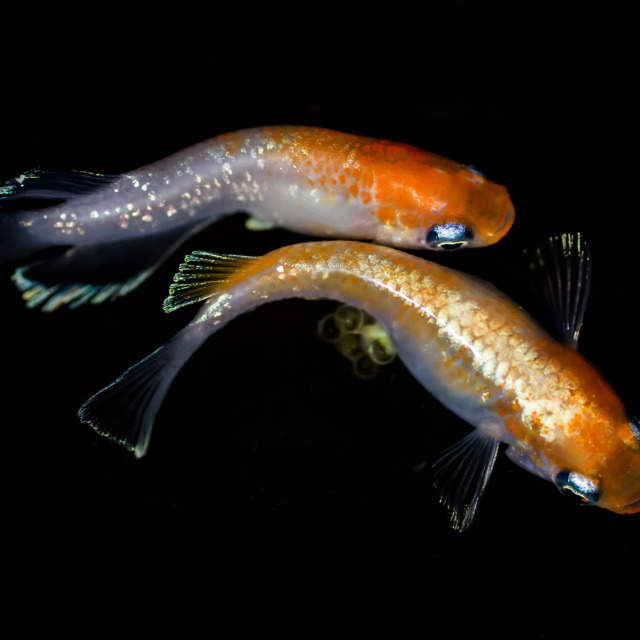

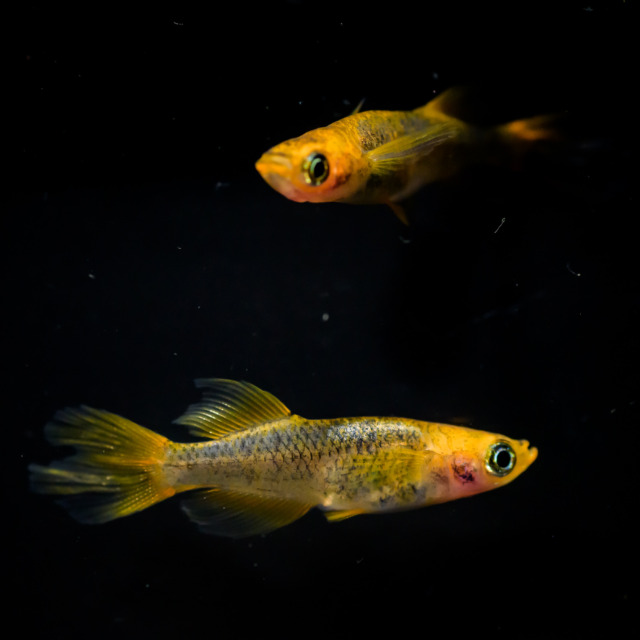

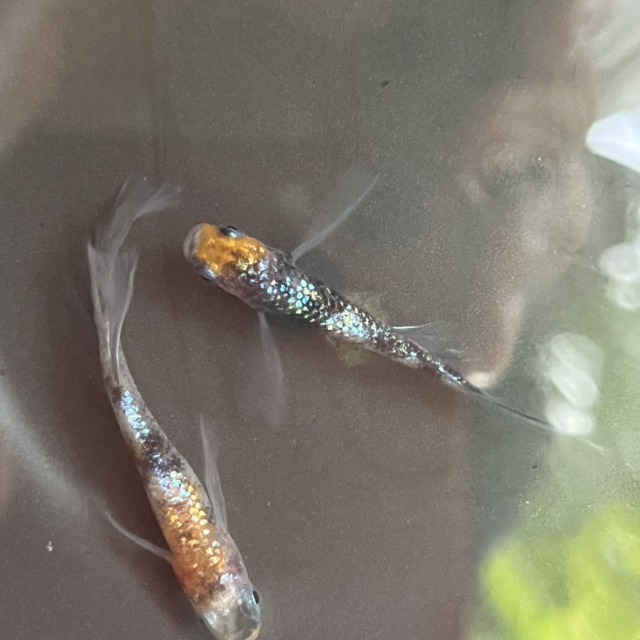
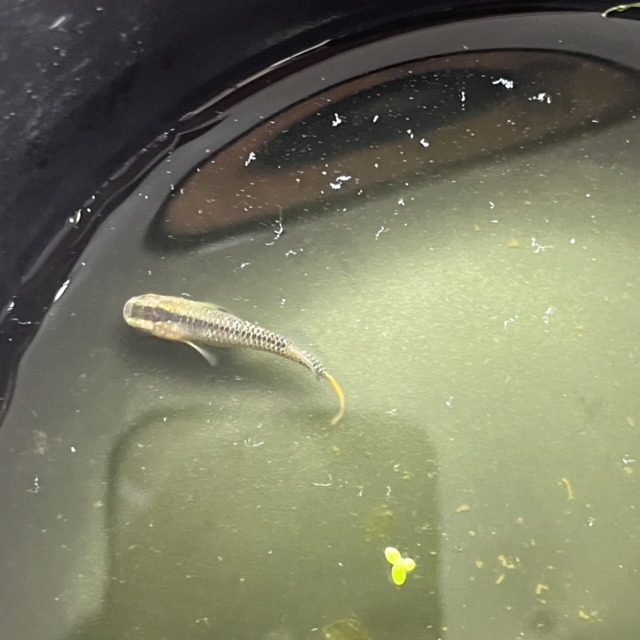
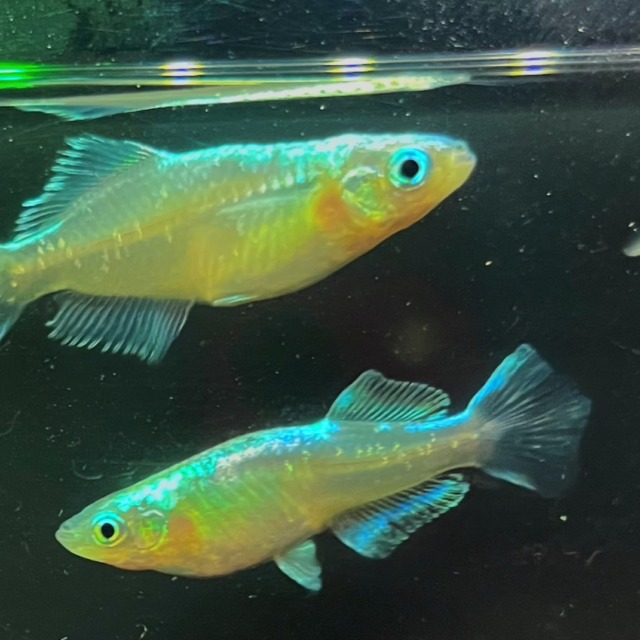
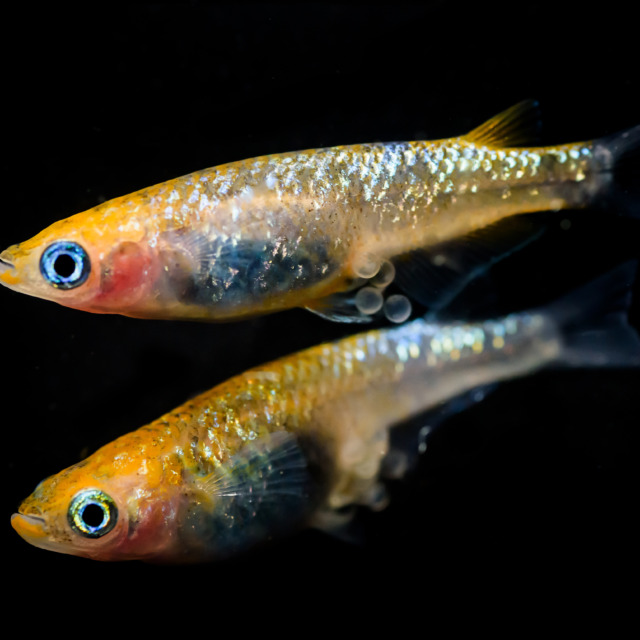



No comments yet.